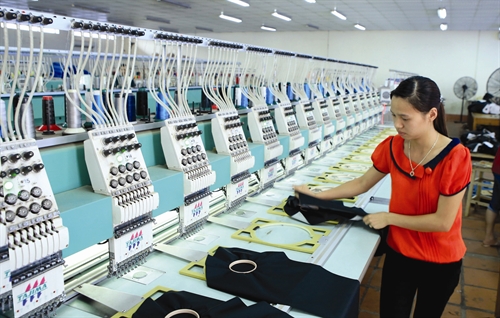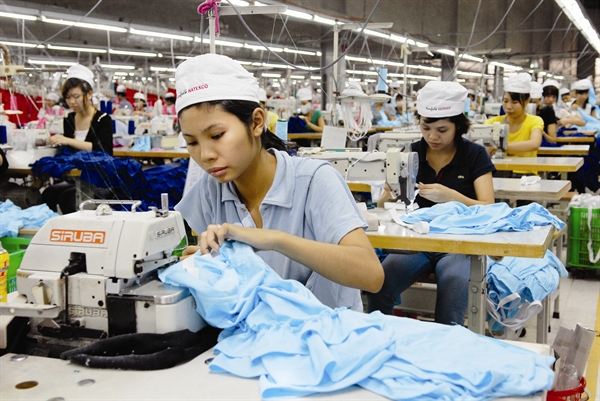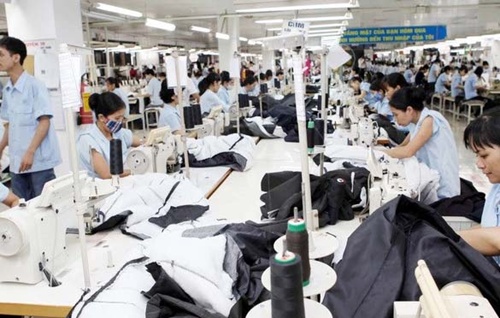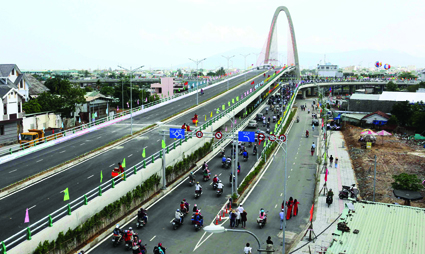>>Vietnam debates TPP: Free trade and beyond
How the Trans-Pacific Partnership (TPP) Agreement will open opportunities to attract investment in Vietnam was the focus of an interview between Nhan Dan (People) newspaper and Dr. Phan Huu Thang, former Director of the Foreign Investment Agency under the Ministry of Planning and Investment.
Joining the TPP is expected to open up opportunities for Vietnam to attract foreign investment from TPP member countries. Could you give us more details about these potential opportunities?
Participation in the TPP will open up opportunities for Vietnam to attract foreign investment in general, including foreign direct investment (FDI), foreign indirect investment (FII) and others. The TPP is a new-generation free trade agreement (FTA) of the 21st century, with a deeper and broader level of tariff line reductions than the WTO; increased service openness; relevant strengthened provisions on foreign investment and investor protection; and enhanced transparency in competition and labor issues. Under a FTA with as large a scope as the TPP, trade relations between Vietnam and TPP member countries will grow stronger in the future, enabling investment flows between Vietnam and countries in the bloc and TPP outsiders. Investors outside the TPP will invest in Vietnam in order to take advantage of benefits from preferential tariffs.
About FII, active mergers and acquisitions (M&A) is a popular activity in the international investment market; developing countries with a clear, consistent and transparent M&A legal basis will be favorable destinations for foreign investors. The wave of M&A in Vietnam has recently increased sharply; foreign investors entering the Vietnamese market through the acquisition of domestic enterprises have increased significantly (for example, Thai Group Berli Jucker (BJC) acquired Metro Vietnam worth USD 870 million). Vietnam joining the TPP will boost the wave of M&A in the country.
On the capital market, many large foreign investors (investment funds and financial conglomerates) are present in Vietnam. The total number of US investors at the moment has reached 995, with 565 individual investors and 430 institutional investors in Vietnam. In addition, Vietnam’s relations with other countries, especially the US, through the TPP have grown to new heights, not only encouraging organizations, corporations, companies and individual investors to invest in Vietnam through FDI and FII, but also promoting remittances of the overseas Vietnamese community for domestic investment. The recent policies of the Government, with the 2014 Investment Law, Enterprise Law and Law on Real Estate Business taking effect on July 1, 2015, to ease ‘room’ on the stock market, separate business with investment, and allow foreigners to buy houses in Vietnam for use or sublease, will promote foreign capital flow into Vietnam.
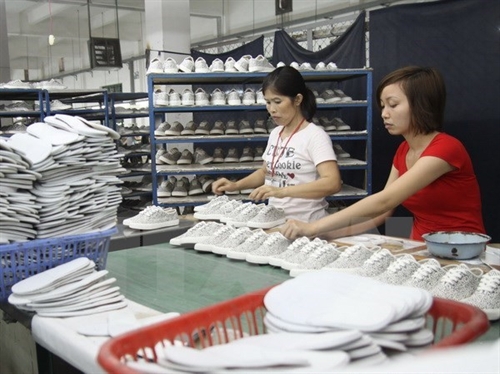 |
| Workers at a footwear factory__Photo: VNA |
The opportunities to attract FDI and FII from TPP member countries are enormous, especially with large investment partners with abundant financial resources, high-level management and advanced technologies. What does Vietnam need to do to take advantage of these opportunities?
To take advantage of the TPP, Vietnam needs to improve the investment environment and enhance its competitiveness by soon completing legal documents guiding the implementation of newly-enacted laws (such as the Investment Law and the amended Enterprise Law), while facilitating administrative procedure reform, improving the accountability of civil servants in business investment related issues, and providing information for Vietnamese enterprises to understand challenges facing them in international integration, what to do to take advantage of the integration process and how to connect with foreign firms to create spillover effects of FDI in the domestic sector.
The TPP brings not only opportunities but also challenges. Could you point out the biggest challenge from the TPP in the field of investment?
It is true that the TPP presents challenges along with opportunities. Regarding investment, attracting investment opportunities through the TPP is not only a goal of Vietnam, but also of all other member states; ultimately, the choice of investment destination is up to foreign investors. The investment environment of each country comprises many factors including institutions, the legal system, government administration, infrastructure, and service and workforce delivery. By being more competitive in these fields, we can attract more foreign capital. If Vietnam does not innovate and enhance competitiveness of its investment environment or lags behind other countries, we will not be able to take advantage of opportunities to attract investment capital brought by the TPP.
Opportunities to attract FDI from countries both in and outside the TPP are significant, but also challenging as many projects are low-tech and cause environmental pollution in fields like textile, apparel and footwear. It is necessary to avoid such projects while focusing on attracting investment from TPP partners, especially those with hi-tech resources, to enhance the competitiveness of Vietnam’s enterprises and products in the long run. It is also important to say no to investors with small-scale projects and no long-term business objectives in Vietnam.
Another challenge for investing through FTAs including the TPP is the weaknesses in researching and evaluating the type of foreign investment in Vietnam, so there is virtually no overall picture on foreign investment, including FDI, FII, ODA, remittances, and NGOs in each stage of economic integration to seek a common solution for foreign investment in Vietnam. In the process of deepening integration of Vietnam's economy today, there should be overall comprehensive studies, evaluations, and reports to take advantage of opportunities brought about by integration and to further promote Vietnam’s potential.
Finally, it is necessary to enhance development of auxiliary industries and promote investment in improving local material sources according to the rules of origin; to enjoy low tax rates for exports to TPP member countries, the exporting country must have self-produced raw materials or imported the materials from other TPP member countries. However, switching from materials imported from outside the TPP at present to TPP member states is not entirely easy and especially difficult to do immediately.- (VNA)

